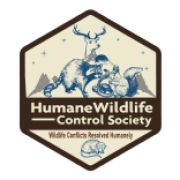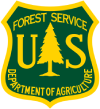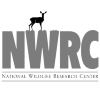Humane Wildlife Control in Charlotte, NC
The Humane Wildlife Control Society recommends non-invasive solutions to resolve human-wildlife conflicts. This includes:
Determining if the issue needs to be addressed at all
Opting for preventative measures first
Opting for wildlife exclusion as opposed to trapping
If trapping is the only way to solve the problem do so humanely
The Humane Wildlife Control Society screens candidates prior to recommendation. Our process requires any company we recommend to meet the following criteria:
Is properly licensed in North Carolina for wildlife control
Carries appropriate business licenses and insurance
Complies with all North Carolina laws and regulations for wildlife control
Adheres to the humane principles listed above.
In Charlotte, North Carolina we recommend Humane Wildlife Removal Charlotte for professional wildlife control services. This is a private company that charges for their services.
Contact Information:
Wildlife Removal Charlotte
704-419-8169
If you have any wildlife issues that can be handled by the state government agency for free, the North Carolina Wildlife Commission can help.
State Contact Information: 919-707-0010
The State Department of Agriculture may also be able to address your wildlife problem for no charge.
USDA Contact Information: (919) 707-3000
Homeowner’s Guide to Wildlife Intrusions in Charlotte, North Carolina
Introduction
Charlotte’s expanding urban landscape increasingly intersects with natural habitats, creating frequent wildlife interactions for homeowners. This guide provides practical, effective strategies for addressing common wildlife intrusions while maintaining compliance with North Carolina wildlife regulations.
Identifying Common Charlotte Wildlife Intrusions
Structural Intrusions
Homes in Charlotte frequently experience attic invasions by raccoons and flying squirrels, particularly in older neighborhoods with mature tree canopies. These animals access structures through damaged roof vents, deteriorated soffits, or gaps where rooflines meet walls. Gray squirrels commonly enter attics in the Dilworth and Myers Park areas where large hardwood trees provide direct roof access.
Chimney intrusions occur primarily during fall and winter when animals seek warmth. Charlotte’s chimney swift population, a protected migratory species, uses chimneys as nesting sites from April through August, requiring special consideration during removal efforts.
Crawlspace intrusions by opossums, skunks, and groundhogs are prevalent in homes built on pier foundations or with inadequate foundation sealing. These intrusions increase during periods of heavy rainfall when flooding drives animals to seek higher ground.
Yard and Garden Intrusions
Charlotte’s deer population has expanded significantly in recent years, creating browsing pressure in residential gardens, particularly in neighborhoods bordering greenways and undeveloped land. Coyotes, now established throughout Mecklenburg County, may prey on small pets in yard settings.
Woodpeckers cause structural damage to wood siding, particularly on homes with synthetic stucco or weathered cedar. Voles and moles create extensive tunnel systems in lawns, damaging root systems and creating uneven surfaces.
Effective Intervention Strategies
Assessment and Documentation
When discovering wildlife intrusions, begin by thoroughly documenting the situation. Identify entry points, animal signs (droppings, nesting materials, damage patterns), and potential attractants on your property. This assessment provides crucial information for developing effective intervention strategies.
Determine whether dependent young are present before implementing removal strategies. In Charlotte’s climate, most wildlife reproduction occurs between March and August, though some species may have multiple breeding cycles annually.
Exclusion Techniques
Professional-grade exclusion methods provide the most reliable long-term solutions. Install heavy-gauge steel mesh (¼-inch hardware cloth) over vents, gaps, and potential entry points. For chimneys, commercial chimney caps designed to exclude wildlife while allowing proper ventilation offer effective protection.
Foundation exclusion requires trenching around the structure and installing L-shaped barriers extending at least 12 inches below ground and 12 inches outward. This prevents digging animals from accessing crawlspaces.
Habitat Modification
Reducing wildlife attractants significantly decreases intrusion likelihood. Remove fallen fruit from trees, secure garbage in wildlife-resistant containers, and eliminate water sources including poorly drained areas and decorative ponds.
Modify landscaping to reduce cover near structures. Maintain at least a 3-foot clear zone between shrubs and foundations. Trim tree branches to maintain a minimum 8-foot clearance from rooflines, eliminating natural bridges to your home.
Humane Removal
When wildlife has already entered structures, one-way exclusion doors allow animals to exit naturally while preventing re-entry. These devices must remain in place for at least 5-7 days to ensure all animals have exited before permanent exclusion measures are installed.
For persistent problems, consider consulting with licensed wildlife removal professionals who specialize in humane techniques and are familiar with Charlotte’s specific wildlife patterns.
Legal and Regulatory Considerations
North Carolina wildlife regulations prohibit the relocation of certain species, including raccoons and foxes, due to disease concerns. The North Carolina Wildlife Resources Commission requires permits for handling protected species.
Charlotte-Mecklenburg Animal Control addresses domestic animal issues but refers wildlife concerns to state authorities or licensed wildlife professionals. Homeowners should verify that contractors maintain required state permits for wildlife removal.
Preventative Maintenance
Regular property inspections, particularly after severe weather events common in Charlotte’s climate, help identify potential entry points before wildlife intrusions occur. Focus on roof-wall junctions, attic vents, and foundation perimeters.
Schedule annual chimney inspections and cleanings prior to first use each fall to identify and address any wildlife use during off-seasons. Maintain gutters and downspouts to prevent water accumulation that attracts wildlife seeking water sources.
Conclusion
Addressing wildlife intrusions requires a systematic approach combining exclusion, habitat modification, and when necessary, humane removal. By implementing these practical strategies, Charlotte homeowners can effectively manage wildlife conflicts while coexisting with local biodiversity.







